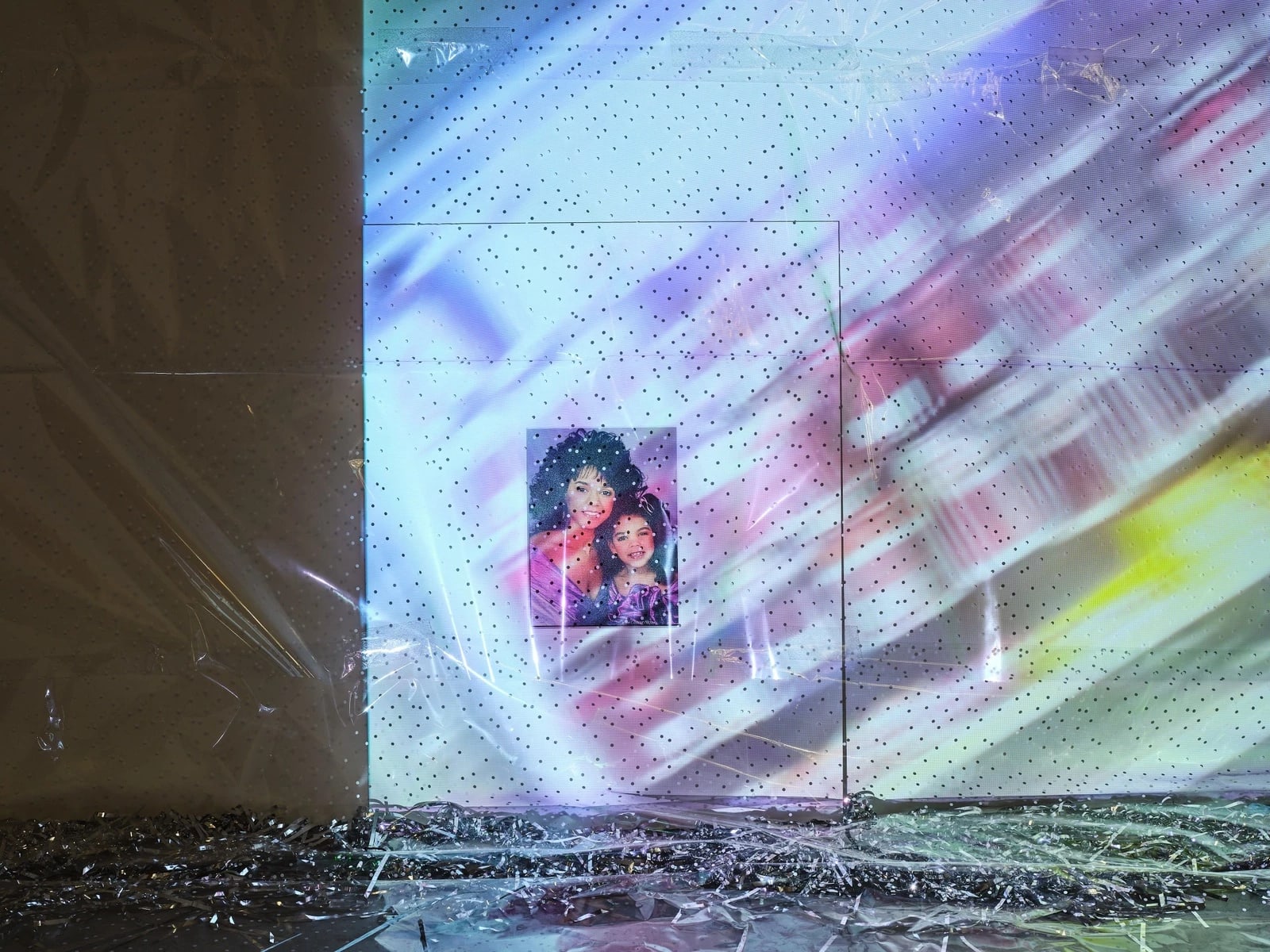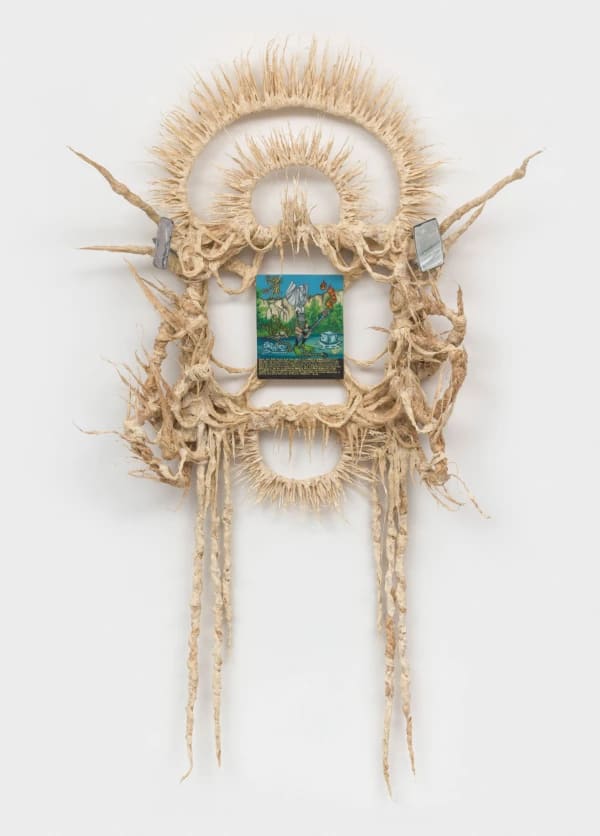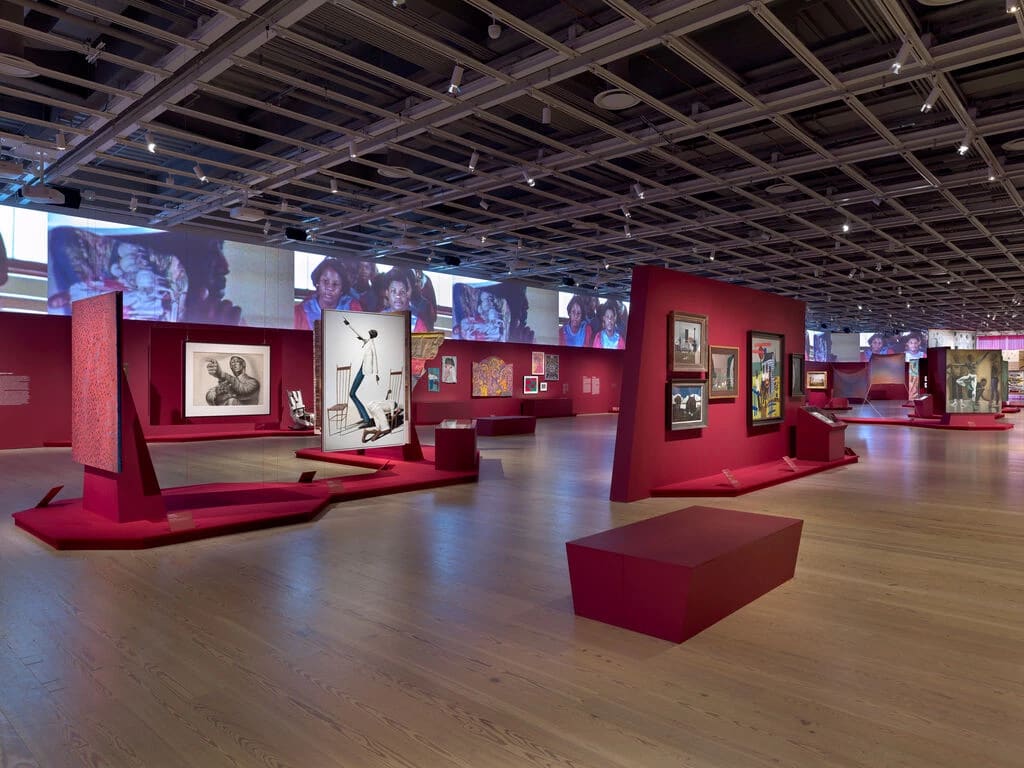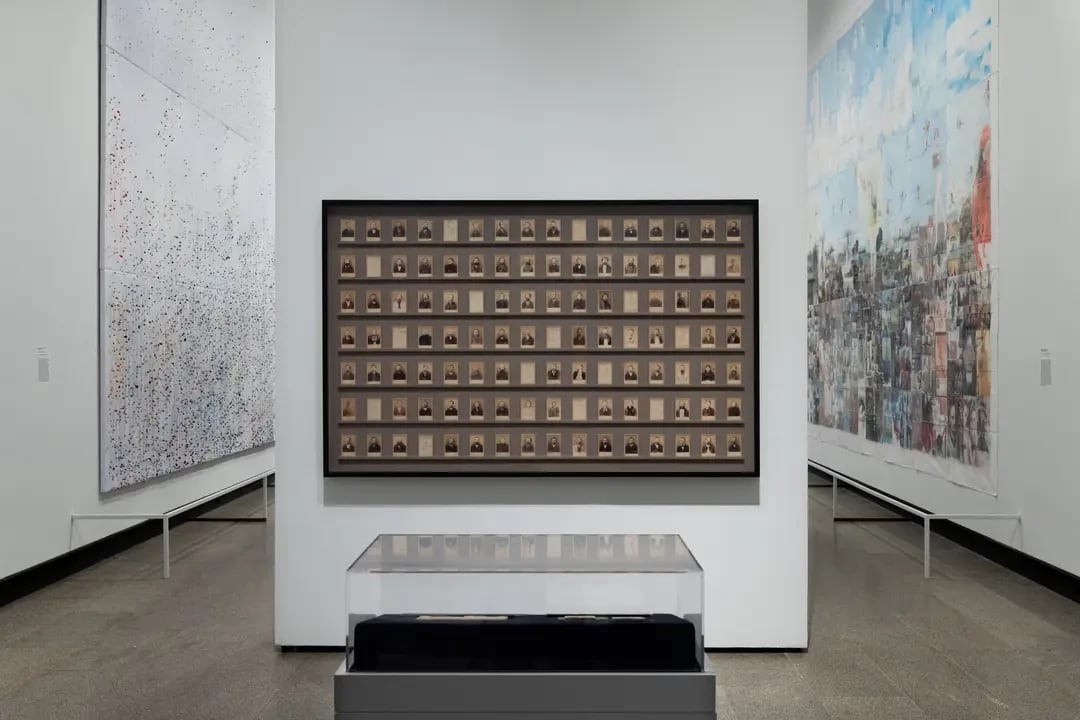A celebration of a legendary choreographer, interrogations of the design canon and various triennials await at these accessible and affordable exhibitions on view across New York City this winter.


Installation view of “Jasmine Gregory: Who Wants to Die for Glamour,” on view at MoMA PS1 through February 17. Photo: Steven Panecassio.
Installation view of “Jasmine Gregory: Who Wants to Die for Glamour,” on view at MoMA PS1 through February 17. Photo: Steven Panecassio.
Whether your New Year’s resolution is to spend more time with art or you’re looking for fun ways to get out and explore the city while staying warm, there are plenty of museums across the five boroughs boasting a wide range of inspiring and thought-provoking exhibitions during the early winter months.
This season’s highlights include a curatorial project confronting the design canon, surveys of artists from across geographies and diasporas, and a large-scale showcase celebrating a legendary choreographer. As a benefit to students, faculty, and staff, SVA maintains memberships at various museums, including the Brooklyn Museum, Museum of Modern Art, MoMA PS1, New Museum of Contemporary Art and Whitney Museum of American Art. This page on the SVA site always offers the most up-to-date information on those institutions, including individual guest policies and ticketing information. Here is a selection of current exhibitions from some of those museums—and others—that you won’t want to miss.

Guadalupe Maravilla. Snake in the Water Retablo, 2022. Oil on tin, cotton, and glue on wood. Courtesy of the artist and PPOW, New York, and Mor Charpentier. On view at “The Brooklyn Artists Exhibition,” through Sunday, January 26.
Brooklyn Museum
“The Brooklyn Artists Exhibition”
Through Sunday, January 26.
Over 200 creators—including 12 SVA alumni—from across Brooklyn are brought together for a survey of contemporary work. “The Brooklyn Artists Exhibition” spans disciplines from drawing and painting to sculpture, video, and installation, exemplifying how the symbiotic relationship between the borough and its artists nurtures artistic and cultural vibrancy.
Also on view as a Museum Spotlight is Trailer by Liza Lou, who is known for a special meticulous attention to her subject matter through glass seed beads, creating uncanny and halting environments that question notions of power, myth, and gender in the United States. On view for the first time in a decade, Trailer embodies this approach, creating a glimmering environment mirroring one found inside of a trailer home.
Museum of Modern Art
Through Sunday, May 11.
Historically, the museum as a cultural institution has functioned as a closed system, selecting what is drafted into the canon. Designer Norman Teague and Michele Washington (MFA 2011 Design Criticism) team up to challenge this “ivory tower” aspect of museum curation from inside one of the largest cultural institutions in New York City. Using MoMA’s own collection, they’ve assembled an exhibition that seeks to reimagine the past by moving beyond the canonical idea of good modern design, one often defined by institutions that favor “European male flavor,” as Teague explains. Together, Teague and Washington ask MoMA how they have terraformed the environment of design and imagine what a future would look like with more people of color and women collected inside of their institution. Read more about Washington and her work in an interview from the spring/summer 2022 Visual Arts Journal here.
MoMA PS1
“Jasmine Gregory: Who Wants to Die for Glamour”
Through Saturday, February 17.
Paintings sprawl into sculptural tableaux as artist Jasmine Gregory (BFA 2019 Photography) asks what it means to digest and produce within a hyper-saturated cultural landscape at her first institutional exhibition in the US. Gregory’s interest in the material histories of image-making weaves through large-scale paintings of appropriated advertisements for wealth management firms and luxury watch companies. At the same time, wine bottles, tinsel, and studio refuse embody the entropic energy of an exploding trophy case. Gregory’s subject matter and approach put pressure on the seams of ideas like self-presentation, Black excellence, virtuosity, and patrimony.

Installation view of “Edges of Ailey” (Whitney Museum of American Art, New York, September 25, 2024-February 9). Photograph by Ron Amstutz.
Whitney Museum of American Art
Through Sunday, February 9.
Throughout his life, Texas-born choreographer Alvin Ailey created 75 ballets. Drawing upon generational memory—an embodiment of his community and ancestors—Ailey composed performances that redefined the perception of American dance. Many of these performances can be seen spliced into a montage on a loop across an 18-channel video installation as part of “Edges of Ailey,” a dynamic showcase bringing together work by over 80 artists, including former SVA faculty member Faith Ringgold. To honor Ailey’s legendary influence and legacy, Black spirituality, intersectional liberation, and histories of music and dance weave through the gallery spaces as narratives of the American South mingle with those of the Caribbean, Brazil, and West Africa, highlighting the experiences that collectively informed Ailey’s work. Intimate live performances by Alvin Ailey American Dance Theater will occur throughout the exhibition run.
If you want to spend the day at the museum with friends and family, visitors 25 and under now receive free admission (SVA community members will receive free admission regardless of age).
The New Museum
While the New Museum building is currently closed for renovation, off-site programming continues through neighborhood tours focused on area artists and live virtual workshops.

Installation view of Koyoltzintli’s Objects del Futuro, 2024. On view at “Flow States– LA TRIENAL 2024” through Sunday, February 9. Photograph by Matthew Sherman/courtesy of El Museo del Barrio.
El Museo del Barrio
“Flow States– LA TRIENAL 2024”
Through Sunday, February 9.
Suggest admission: $9.
El Museo del Barrio’s second large-scale survey of Latinx contemporary art returns this year, focusing on the fluidity of geographic boundaries and cultural exchanges. Tracing the flow of diaspora to illustrate a layered vision of Latinx identities across geographies, 33 participating artists from across the United States and Puerto Rico are included alongside artists based in the Americas, the Caribbean, Europe, and Asia.
The Bronx Museum of the Arts
Through Sunday, March 30.
Free admission.
In the 1980s, graffiti artists pioneered their way into white wall gallery spaces, clearing space on the globalized commercial stage for street art. One of the most influential of these artists was Futura 2000. Alongside Keith Haring and Jean-Michel Basquiat, Futura 2000 merged street art aesthetics with large-scale abstraction, drawing upon science fiction and space-age themes. “Futura 2000: Breaking Out” brings together sculptures, drawings, prints, studies, collaborations, and archival paraphernalia for a retrospective of the artist’s five-decade career, as well as new site-specific temporary installations.
Cooper Hewitt
“Making Home—Smithsonian Design Triennial”
Through Sunday, August 10.
Admission $10.
A universal definition of “home” is nebulous. Ideas of a home vary across times, cultures, and individuals, and the private nature of domesticity makes it challenging to understand how each person conceptualizes—or realizes—their home. In partnership with the National Museum of African American History and Culture in Washington, the Cooper Hewitt Museum welcomes 25 artists to explore how design shapes a home's physical and emotional realities across the United States. For the first time in the triennial’s history, Cooper Hewitt has commissioned participating artists to create new work for the exhibition, allowing a deeper consideration of the theme and the installation site itself.

Installation view of “Jesse Krimes: Corrections,” the Metropolitan Museum of Art, New York, 2024–25. Courtesy of The Metropolitan Museum of Art. Photo by Hyla Skopitz.
The Metropolitan Museum of Art
Through Sunday, July 13.
Free admission.
Upon entering the gallery at “Jesse Krimes: Corrections,” ghostly renditions of mug shots recall photography's role in upholding systems of control. Image-based installations created by Krimes during his six-year incarceration for nonviolent drug charges are placed next to photographs from The Met collection by the French criminologist Alphonse Bertillon, creating a dialogue that questions the perceived neutrality of our systems of identification and takes a critical look at surveillance. After his release from prison, Krimes has gone on to spearhead initiatives like the Right of Return Fellowship and the Center for Arts and Advocacy to support the emerging careers of incarcerated artists, which he talks about in his recent Artists Roundtable talk hosted by MA Curatorial Practice.

